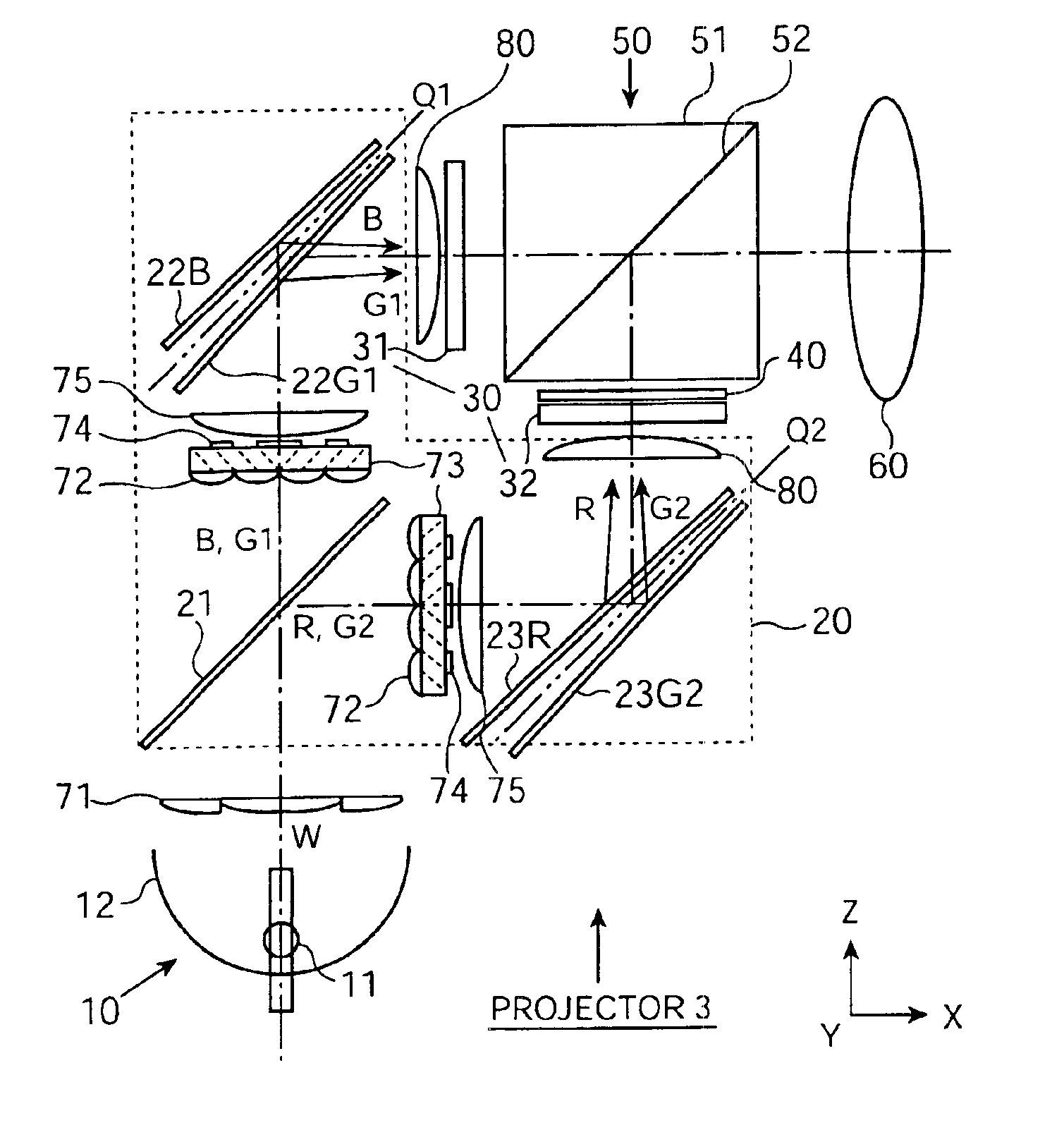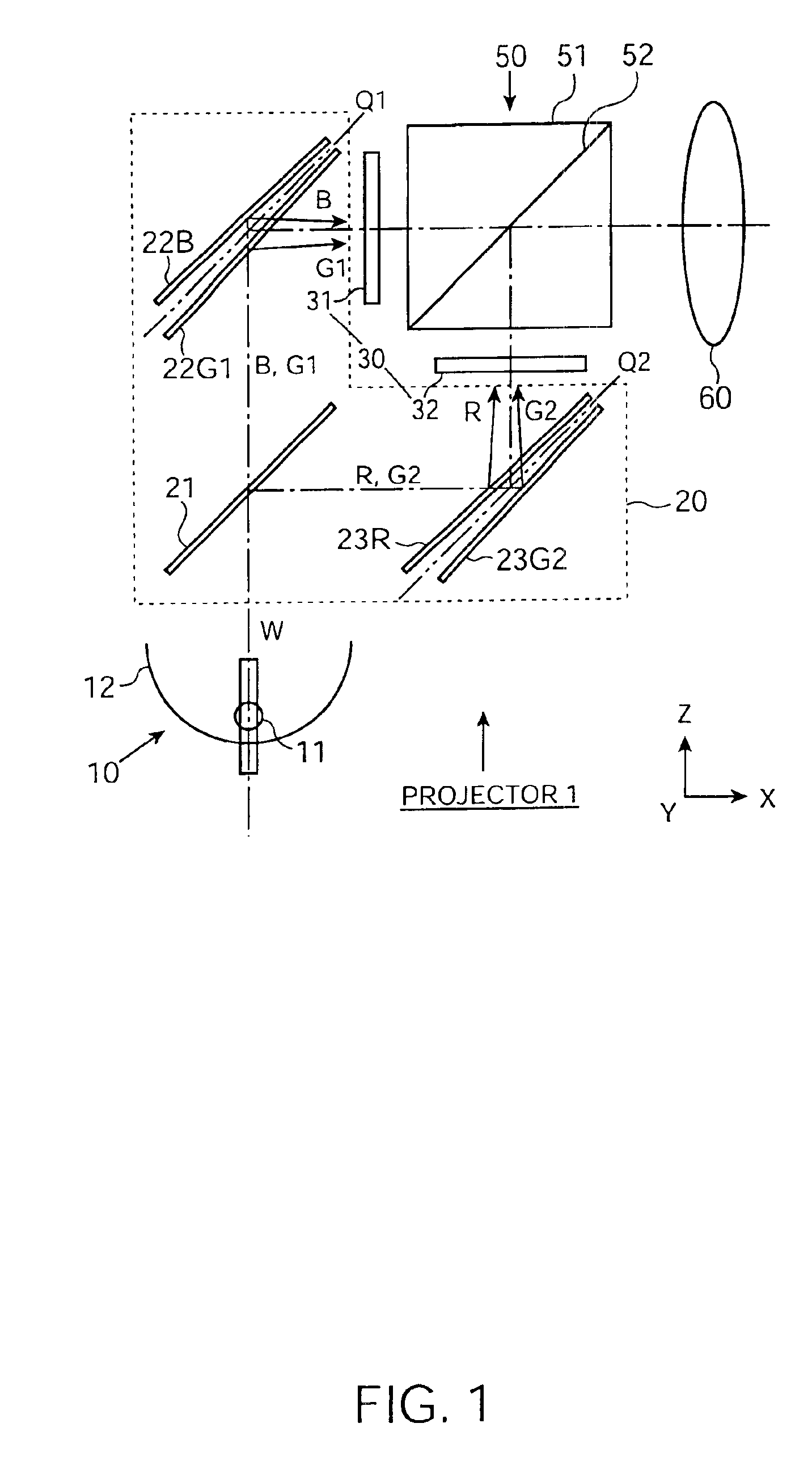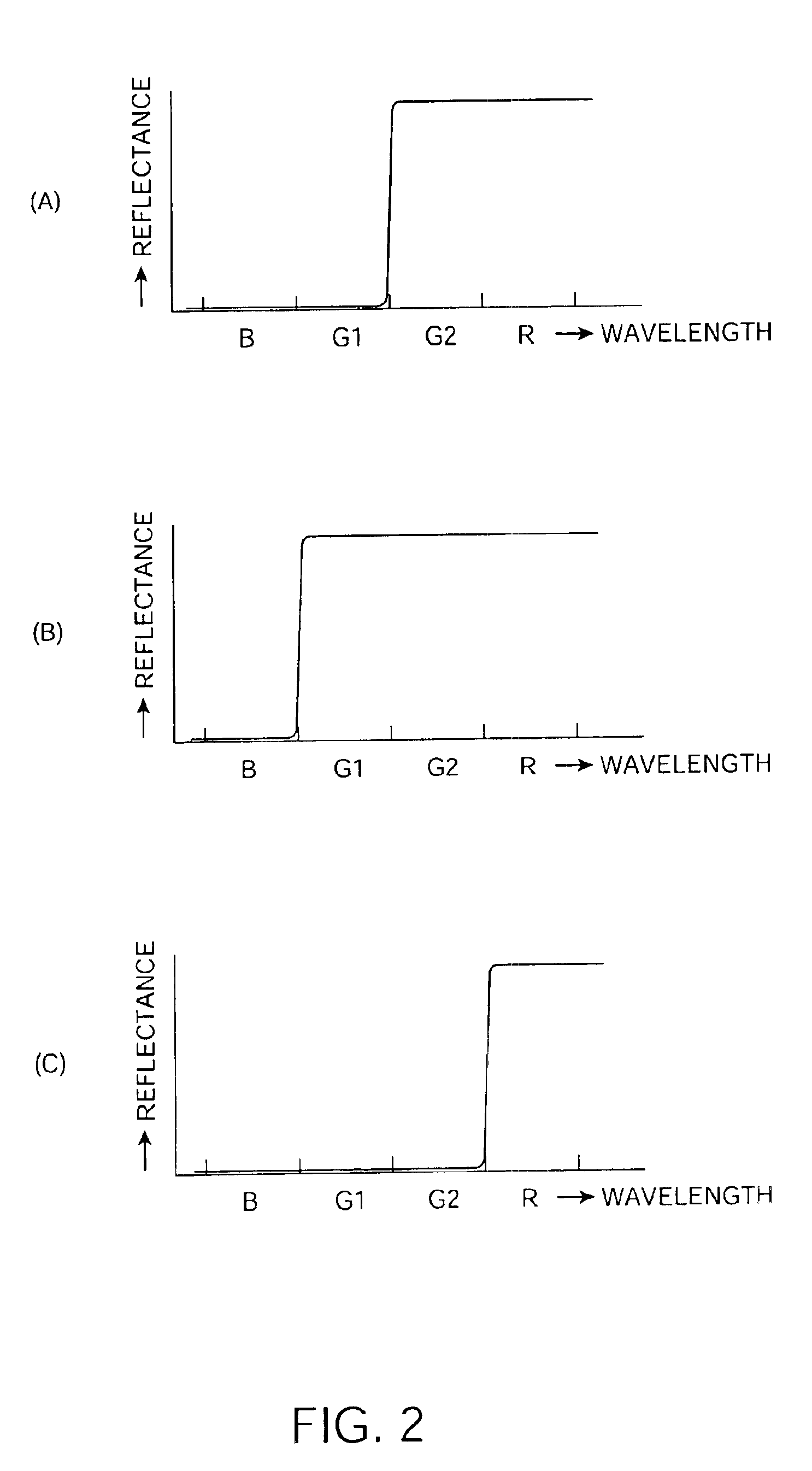Projector
a projector and projector technology, applied in the field of projectors, can solve the problems of low light utilization efficiency of projectors, inability to adequately cover human-visible color gamuts, and large size and cost of projectors, and achieve the effect of expanding the expressible color gamut of projection images and large influence on resolution
- Summary
- Abstract
- Description
- Claims
- Application Information
AI Technical Summary
Benefits of technology
Problems solved by technology
Method used
Image
Examples
first exemplary embodiment
1. First Exemplary Embodiment
[0036]FIG. 1 shows a schematic structure of a projector 1 according to a first exemplary embodiment of the present invention. The projector 1 is generally formed by a light source 10 to emit light including visible light; a color-separation optical system 20 to separate the light emitted from the light source into four kinds of color light, each having a different wavelength band from the others; a light-modulation optical system 30 to form an optical image of each kind of color light by optically modulating the color light on the basis of external image information; a color-synthesis optical system 50 to form one color image by synthesizing the formed optical images; and a projection optical system 60 to project the formed color image onto a projection surface (not shown).
[0037]Although not shown in FIG. 1, a uniform illumination optical system to make uniform an intensity distribution of an illumination flux incident on the light-modulation optical sys...
second exemplary embodiment
2. Second Exemplary Embodiment
[0058]FIG. 8 illustrates the schematic structure of a projector 2 according to a second exemplary embodiment of the present invention. While the projector 2 has substantially the same structure as that of the projector 1 according to the first exemplary embodiment, it has two major differences from the projector 1 in which a polarization-converting optical system to convert light emitted from the light source 10 into a specific polarized flux, and a polarization rotating element to change the polarized state of a polarized flux emitted from the light-modulation optical system 30 are provided. Thus, in the following descriptions including the present exemplary embodiment, the same parts already mentioned are denoted by the same reference numerals and the descriptions thereof will be omitted or simplified.
[0059]The light source 10 and the dichroic mirror 21 serving as the first color-separation optical element have a polarization-converting optical system...
modification 1
[0065]In place of the dichroic mirrors (plate-shaped) 21, 22G1, and 23R and the reflecting mirrors (plate-shaped) 22B and 23G2 in the first and second exemplary embodiments, the color-separation optical system 20 may be formed by a block-shaped dichroic prism. In this case, as described above, an incident angle of light incident on the dichroic surface can be made relatively small, thereby effectively performing color separation of the color light and suppressing occurrence of color unevenness when performing the color separation. Also, since the dichroic surface is unlikely to be warped, the directional separation of the four kinds of color light is accurately performed, thereby enhancing incident efficiency of color light incident on the corresponding sub-pixel, and also reducing or preventing unnecessary color light from being incident on the neighboring sub-pixels of the foregoing sub-pixels so as not to cause color mixture; as a result, a color image having excellent color repr...
PUM
| Property | Measurement | Unit |
|---|---|---|
| wave length | aaaaa | aaaaa |
| wavelength | aaaaa | aaaaa |
| wavelength | aaaaa | aaaaa |
Abstract
Description
Claims
Application Information
 Login to View More
Login to View More - R&D
- Intellectual Property
- Life Sciences
- Materials
- Tech Scout
- Unparalleled Data Quality
- Higher Quality Content
- 60% Fewer Hallucinations
Browse by: Latest US Patents, China's latest patents, Technical Efficacy Thesaurus, Application Domain, Technology Topic, Popular Technical Reports.
© 2025 PatSnap. All rights reserved.Legal|Privacy policy|Modern Slavery Act Transparency Statement|Sitemap|About US| Contact US: help@patsnap.com



